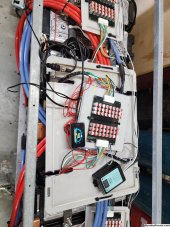EV battery warranties are usually relevant if SOH drops below 70%.
Most modern EVs (excluding Nissan Leaf) have active cooling/thermal management which helps alot with minimizing degradation.
I really doubt that Hyundai/Kia EVs from 2019-2020 would have 70% SOH.
Just for comparison , my EV from Jan. 2021, with 40k km on it has 93% SOH.
I don't want to be a party pooper, especially since you already bought the batteries. But I really think you should know what you have on your hands. Be aware that these are most likely modules that came off recalled battery packs. With all the dangers included.
As an EV owner and fan, I followed the LG CHEM saga closely. Fortunately, my EV uses CATL cells. The LG CHEM packs were found to have a manufacturing defect, which causes internal shorts and hence fire/combustion.
Anyways, the one thing I'm not sure of with the whole recall saga, is, if they were able to identify or discriminate bad modules from good modules. I think that if the defect was easily identifiable, they would have found it early in quality assurance checks. The fact is that they didn't. Maybe because it hard/impossible to identify the defect on a working battery pack, until it's too late.
Just looking out for your safety...






